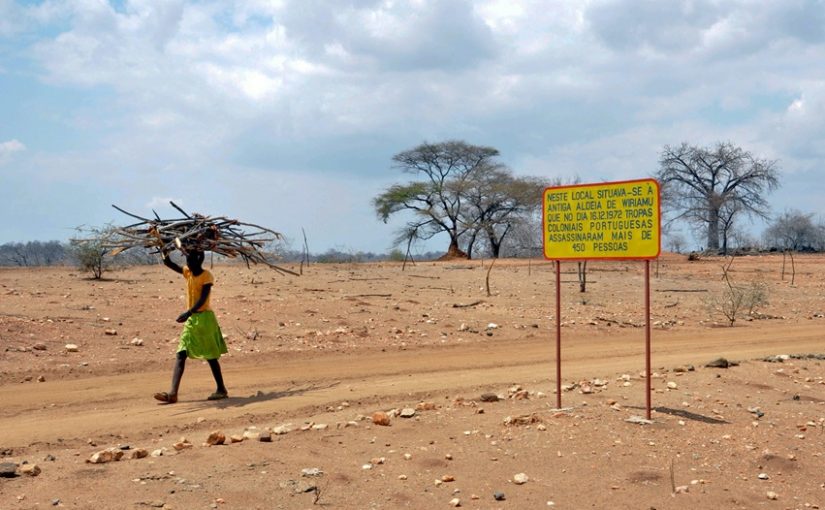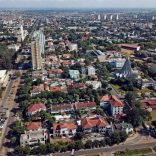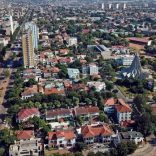Mozambique: Inhambane Mayor wants to "remove city's proliferating ruins" - report
Mozambique classifies 397 sites as National Liberation Struggle Heritage

File – For illustration purposes only. A peasant woman passes by a commemorative plaque for the Wiriyamu massacre (December 1972) in Tete Province. [File photo: Lusa/António Silva]
The Mozambican government tis Tuesday approved, at a Council of Ministers meeting, the classification of 397 sites as National Liberation Struggle Heritage, including former PIDE prisons and “massacre sites” from the colonial period.
The Council of Ministers “approved the decree classifying the assets and historical sites declared as National Liberation Struggle Heritage,” government spokesperson Inocêncio Impissa explained to journalists following the meeting.
“Under the referenced law, the National Liberation Struggle Heritage includes bases, detachments, educational centres, monuments, political police prisons (PIDE), as well as artefacts and archives related to the liberation struggle,” he added.
The classification, he said, “aims to ensure the protection, preservation and valorisation of the National Liberation Struggle heritage,” in accordance with current legislation, which “establishes a specific legal framework for the National Liberation Struggle Heritage.”
“Consequently, a comprehensive survey of these sites was conducted across the national territory, identifying 397 historical sites, including bases, detachments, educational centres, medical posts, massacre sites, mass graves and commemorative monuments, as well as artefacts and documentary archives related to the liberation struggle,” Impissa continued.
No specific sites have yet been disclosed as officially classified.
Mozambique proclaimed its independence on 25 June 1975, announced by the then first Mozambican President, Samora Machel, in Maputo.
The Vila Algarve, which served as a PIDE prison during the colonial period in Maputo, is one of the most contentious sites from the colonial era.
Lusa previously reported that the classified site will be transformed into a museum-hotel, intended to “immortalise” the history of the Mozambican people, according to the National Director of History at the Ministry of Veterans.
“That building is a symbol of the Mozambican struggle. Mozambicans who demanded freedom from the Portuguese colonial regime were imprisoned, tortured, and even murdered there,” National Director of History at the Ministry of Combatants. Guilherme Ombe explained in a recent interview with Lusa in Maputo.
According to the director, the planned restoration by the Ministry of Combatants for the building — currently in an advanced state of decay — at number 10, the junction of Mártires de Machava and Ahmed Sekou Touré avenues, central Maputo, will preserve this part of the country’s history through a public-private partnership authorised by the government.
Currently, all entrances to the villa — built in 1934 in the heart of Maputo, expanded in 1950, and this far classified as a Building of Architectural Interest — are boarded up to prevent occupation by homeless people, as had occurred in previous years.
“This restoration and refurbishment work aims to immortalise this history of the Mozambican people, to preserve it and bring to the attention of current and future generations what that building symbolised,” stated the National Director of History at the Ministry of Combatants.
Guilherme Ombe noted that the existing building will be restored and converted into a museum, with hotel services established above it: “The investor will present us with an executive project outlining how they plan to carry out this restoration and conversion into a museum-hotel.”
From the imposing villa in central Maputo, once decorated with extensive mosaics featuring naturalistic motifs, today only the walls, ceilings and roofs remain, alongside dark stories from the colonial period when the PIDE confiscated the building and used it as a torture site for independence fighters.
READ: Mozambique: Vila Algarve redevelopment – historic features retained below, hotel built above “to ensure its sustainability”
Such stories are captured in the poetry of Mozambican poet José Craveirinha (1922–2003), notably in his 1967 poem “Não sei se é uma medalha” and in two versions of “Vila Algarve” (1988 and 1998), reflecting on his time detained there and subjected to PIDE interrogation.












Leave a Reply
Be the First to Comment!
You must be logged in to post a comment.
You must be logged in to post a comment.